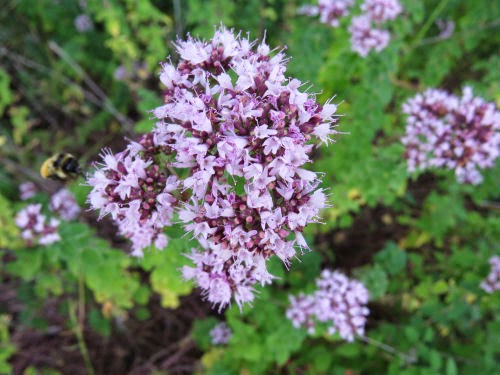Late summer is when the wild Eupatoriam shine. Here are three of them.
First is this meadow featuring two, boneset (white) and joe-pye weed (pinkish mauve).

The Boneset is always easy to identify. The clusters of small white flowers look fluffy.

It's Eupatorium perfoliatum, like "perforated leaves" which is a key identifying feature.

It often grows with Joe-pye weed, Eupatorium sp., because both like damp places, although the Joe-pye can tolerate drier soils. You often see vast stretches of the dusty pink blossoms, like this one I showed you in 2012.

There are actually several kinds of Joe-pye, and I didn't take a close-up picture of the ones in that meadow to ID it with any certainty. However, this one, just starting to bloom is probably Eupatorium maculatum, spotted Joe-pye. The stems don't look particularly spotted, but the flower cluster is very flat-topped, so I'm going with that. Sweet Joe-pye and hollow Joe-pye have domed clusters.

Finally, here is a Eupatorium that isn't as interested in damp soil. In fact, it is growing in a very hot and exposed place near my house. It also has more of a blue tinge to it than the pink-ish purple of other species. It's mistflower, Eupatorium coelestinum.

The leaves are small and roundish, a rather attractive foliage.

Most Eupatorium have terminal clusters of small flowers. You may see the similarities in these three.
 | See Purple in the Fields |
| if you like this blog, click the +1 | |
4 comments:
They look insignificant.
But the huge quantity makes everything looks beautiful.
Oh, yes, the lovely Eupatoriums ~ they are in bloom here in southern New England, too!
And that Eupatorium coelestinum … it's amazing how much those flower heads resemble oregano ~ lovely!
That last one is really pretty.
How lovely to see these blossoms growing wild all over the place, in various colors.
Post a Comment